In the Moderna Museet in Stockholm there is a sculpture by Katharina Fritsch, which references Chekhov’s famous story ‘Lady with a Dog’. It was part of a Jeff Koons mini-show. At the time (2014), I thought it was by Koons. The postcard disabused me. It shows a woman in unapologetic Barbara Cartland pink, with a parasol, accompanied by a white fighting Pekinese. Both are constructed entirely from shells — she mainly scallop shells, her ample bust the bulging hinge of a clam, her arms fashioned from auger shells like mini-whelks. We have seen this ‘art’ before in a thousand evening classes for housewives who couldn’t get into the over-subscribed flower-arranging or macramé.
It is the dog that makes the sculpture remarkable: it is an exact, pitch-perfect arrangement of a very few clam shells to capture the proud carriage, the bonsai bearing, the absurd chutzpah, the top-dog self-confidence. Like Koons’s balloon dog, it teleports a vulgar representation from the vernacular into the palace of art — a commoner into the royal family. It is a branch of pop art, a branch Alexander Calder might be said to have pioneered in his ‘Cirque Calder’ (1926–31), which took the greatest show on earth and raised its status by prodigal invention. Think of Calder’s wire sword swallower slightly bent forward at the waist as he gags on the sword whose hilt fills his mouth. The piquant, puking accuracy is all in the posture. What is now accepted was, in Calder’s day, slightly dubious, lacking the gravitas of great art. In his autobiography, Calder records the verdict of a patron as he patiently packed up his circus into its suitcases: ‘Mrs Bernstein said, “It’s a lot of work.” That was her only comment.’
Calder was a volcano of invention, almost impossible to represent in his teeming, tumultuous entirety — especially the bespoke, customised designs for BMW cars and Boeing airplanes. The huge Calder show at Tate Modern in 2015 didn’t begin to cover his remarkable output. The current selection at Hauser & Wirth Somerset is charming and modest, a taster menu of bonnes bouches. It is devoid of art snobbery and begins with a vitrine of household items touched by the Calder genius. When Calder was 40, he commissioned a birthday cake from an Italian bakery in Danbury, for himself and Malcolm Cowley (who near-as-dammit shared a birthday). The iced lettering said: FORTY, FIT, FAT, AND FARTY. Here there is an upturned brass hand giving us the finger — what Germans call der Stinkefinger — to hold a toilet roll. He was unafraid to be coarse.
There is a toaster like an instrument of medieval torture — the tendrils of the element wrapped round an uneven flat stone. The bread rested against a wire grill. It has a two-point plug and a table-lamp to-fro switch. Above the machine is a wire halo with meandering circles, either to keep the toast warm or possibly to heat up waffles. It is unmistakably, undeniably sculptural — practical and a work of art that intrigues and woos the eye. There is an item allegedly for skimming the skin from pasteurised milk, shaped like a hand mirror or a table-tennis bat. The inner circle is an irregular silver spider’s web, which made me wonder if it wasn’t actually a fly swat. There is a pair of clogs, with leather tops and proper wooden soles edged with red, the heels painted yellow. Hard not to think of Tolstoy’s bookshelf containing all his works, War and Peace democratically next to the boots he cobbled together in his peasant phase of simple, showy self-denial. Here, too, is a small, ravishing bird of beaten brass, Calder’s version, as it were, of Yeats’s golden bird, ‘set upon a bough/ To sing to lords and ladies of Byzantium’. Its wings are two decorative coils. The head is another coil. There are six curved tail feathers. The claws have one backward and three forward branches: the lower is larger and therefore the nearer. They are the one touch of three-dimensionality. Otherwise the bird is like some magic creature pressed and flattened like a flower in the family bible but still alive and vital. I coveted it.
Calder invented the mobile (named by Marcel Duchamp) and the stabile (named by Jean Arp). They form the bulk of this show and they are notoriously difficult to describe. Calder tried and failed himself: ‘The Calderberry Bush: a two-metre rod with one heavy sphere suspended from the apex of a wire. This gives quite a cantilever effect. Five thin aluminum discs project at right angles…’ No wonder he gave up. You don’t get the idea. There is a stabile maquette here called ‘Ex-Octopus’ (1936), baffling in its jet-black, shape-shifting loveliness. It reminded me that Calder, for all his Falstaffian bulk, was an enthusiastic and nifty dancer of the polka and the samba. ‘Ex-Octopus’ has all the flourish of two tempestuous tango dancers, deliciously entangled and committed to flamboyant switches of direction.
Miro was an important influence — when Calder first saw Miro’s work, he wondered if it were art at all — and his influence is visible here. There is a room full of imagined animals and insects reminiscent of Miro’s Star Wars franchise of futuristic creations from outer space. One has three legs, red, yellow and black. Its body is wooden and hollowed out. Springing out of it on wires are little lumps of black truffle. It is walking on tiptoe like one of those stilted insects that carry around a quality of convalescence.
Not everything is delicate. ‘La Grande Vitesse’ (1969) is an orange stabile, all rivets, bolts, panels and overlaps, like an abstract of Dürer’s rhinoceros. It is encumbered, armoured — a Goliath of deliberate gracelessness, like some terrible insect exoskeleton. I thought of Claudio Abbado in a television documentary shortly after his appointment to the Berlin Philharmonic. He was rehearsing a young violinist. He told her she was playing too beautifully, that she wasn’t being ugly enough. Calder, too, has the requisite fearless appetite for everything. He gave Sartre a mobile bird — ‘made out of Connecticut license plates’.
Got something to add? Join the discussion and comment below.
Get 10 issues for just $10
Subscribe to The Spectator Australia today for the next 10 magazine issues, plus full online access, for just $10.
You might disagree with half of it, but you’ll enjoy reading all of it. Try your first month for free, then just $2 a week for the remainder of your first year.

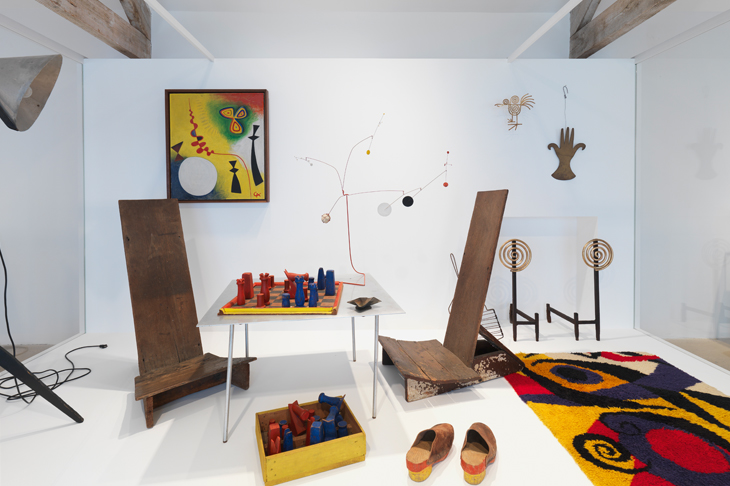


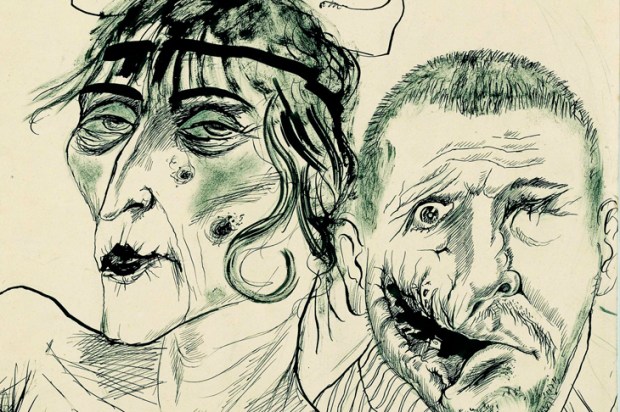
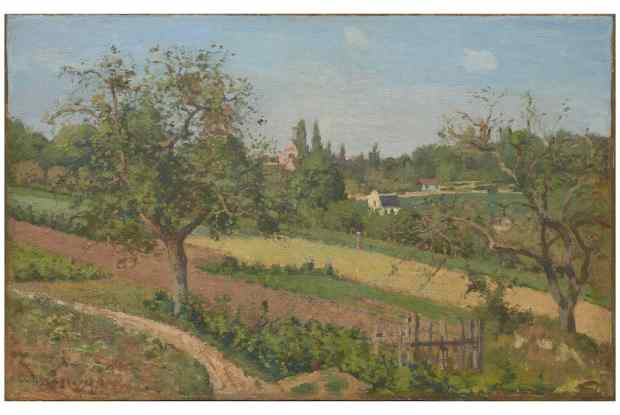
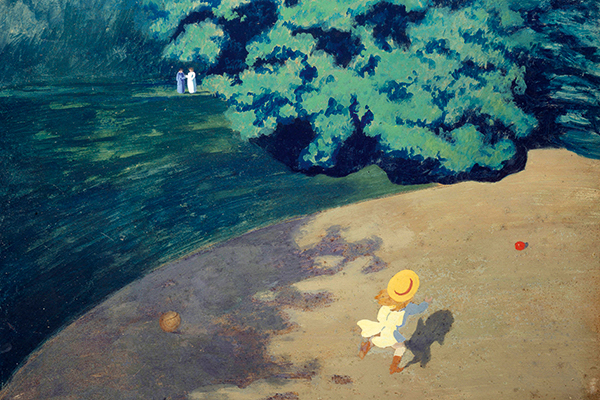
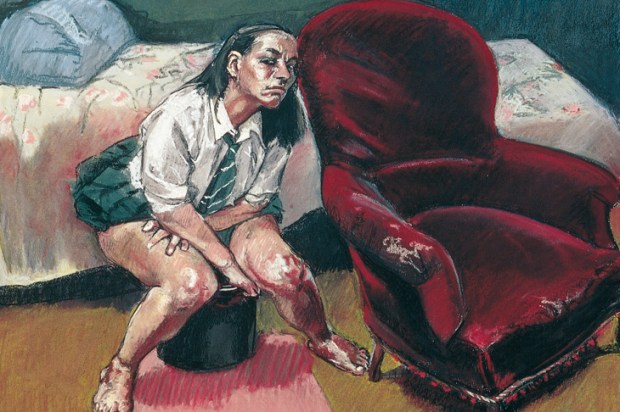






Comments
Don't miss out
Join the conversation with other Spectator Australia readers. Subscribe to leave a comment.
SUBSCRIBEAlready a subscriber? Log in